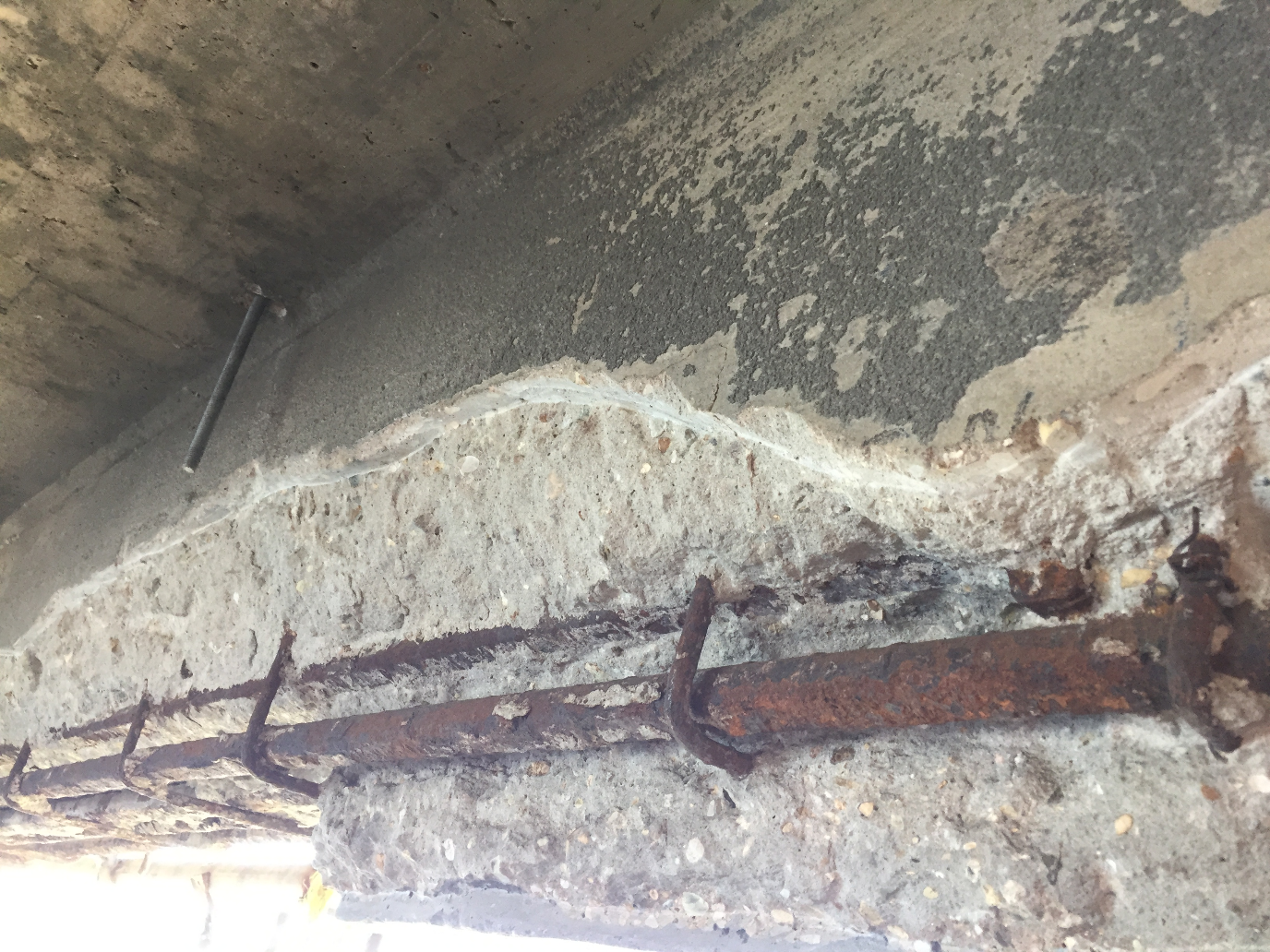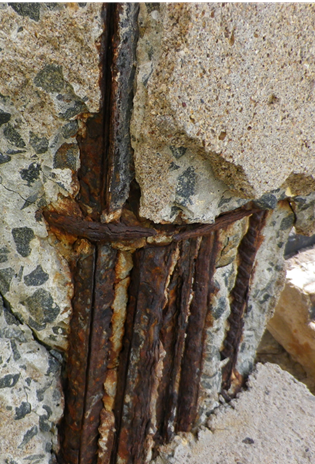The Corrosion Conundrum - Durability Risks and Protection of Bridge structures
12th June 2019
Over the past few decades, the desire to extend the useful service life of infrastructures has become of paramount significance. Where the aging infrastructure is a serious problem faced by countries across the world, the premature deterioration has also emerged as the major problem that results in reduced service life of the reinforced concrete structures.
The construction industry has recently been witnessing ambitious designs and specifications to achieve this desired design service life. The adoption of high standards of design and construction of new concrete structures has become a major focus. Despite the ambitious project specifications and design parameters, reinforced concrete structures are always subjected to numerous durability risks. This article attempts to highlight the carbonation and chloride attack risks to the reinforced concrete bridges.
Bridge Hierarchy - Bridge Structural Elements and Exposure to Risks
Concrete bridge structural elements are constantly subjected to multiple risk factors that result in deterioration over the course of their service lives. The causes of deterioration and concrete distress are due to multiple expository variables such as aging, corrosion, cracking, vehicular overload, environmental factors, climates, material properties, inadequate design and poor asset management. Natural hazards, floods and collisions are also primary causes of bridge failures.
 Bridge failure may be defined as the inability of a bridge to serve its intended function with the desired levels of safety and serviceability. Failure of a bridge may be attributed to a number of independent and interrelated factors. Corrosion of the steel generates iron oxides and hydroxides, resulting in 5 to 6 times increase of volume than the original size. This increase in volume causes expansive forces to accumulate within the concrete around reinforcement and results in concrete spalling. The American National Bridge Inventory, 2006, reported that environment- induced corrosion has structurally affected 73,764 bridges in the USA. The US Department of Transportation report suggested in 2012 that 11% of the country’s 607,380 bridges fall under the classification of structurally deficient assets due to traffic loads, aging of construction materials and other factors. Similarly, a considerable number of bridges located in the coastal areas of Japan have experienced early onset concrete deterioration due to corrosion within ten to 15 years of construction completion.
Bridge failure may be defined as the inability of a bridge to serve its intended function with the desired levels of safety and serviceability. Failure of a bridge may be attributed to a number of independent and interrelated factors. Corrosion of the steel generates iron oxides and hydroxides, resulting in 5 to 6 times increase of volume than the original size. This increase in volume causes expansive forces to accumulate within the concrete around reinforcement and results in concrete spalling. The American National Bridge Inventory, 2006, reported that environment- induced corrosion has structurally affected 73,764 bridges in the USA. The US Department of Transportation report suggested in 2012 that 11% of the country’s 607,380 bridges fall under the classification of structurally deficient assets due to traffic loads, aging of construction materials and other factors. Similarly, a considerable number of bridges located in the coastal areas of Japan have experienced early onset concrete deterioration due to corrosion within ten to 15 years of construction completion.
The Environment - Understanding Climate Change and Carbonation
Concrete deterioration rate depends not only on material specifications and construction practices, but also relies on the on-going climatic environment during the life cycle of the structures. Atmospheric CO2 is a growing cause of corrosion in bridges, buildings and other concrete infrastructure throughout the world. Using probabilistic and reliability-based approach, Stewart et al. researched “Climate Change Impact and Risks of Concrete Infrastructure Deterioration”, and concluded that carbonation-induced damage risks may increase by over 400% by 2100 for inland arid or temperate climates in Australia.
Concrete, being the most produced construction material, second only to water in global consumption, contributes more than 5% of annual global CO2 emissions. The use of supplementary cementitious materials is becoming common in durability concrete mix designs. Repair mortar manufacturers such as Fosroc, have also started manufacturing high performance repair materials based on supplementary cementitious materials making it more environmentally friendly and sustainable with a lower carbon foot print.
The exposed elements of the bridge super-structure are subjected to carbonation – the process that results in reduction of the concrete pH. The formation of the passive layer protects the steel in concrete due to inherent alkaline environment in concrete. As a result of carbonation, the passivity of steel is disrupted, and electrochemical process of corrosion can be initiated. Carbonation takes place as a result of the penetration by atmospheric carbon dioxide, which reacts with the calcium hydroxide in the concrete to form calcium carbonate. This consumption of calcium hydroxide drops the pH level of concrete which is the primary effect of carbonation. This process begins almost as soon as the concrete structure is built but takes time for the carbonation process to change the alkalinity at a depth to affect the embedded steel within the concrete.
As a secondary effect, carbon dioxide could also cause leaching and additional shrinkage due to the transformation of CO2 into carbonic acid (H2CO3) and its reaction with calcium hydroxide to form calcium carbonate and water. The reaction is described by: H2CO3 + Ca(OH)2 → CaCO3 + 2H2O
The external relative humidity range of 40% to 80 % increases carbonation. The carbonation below 30% relative humidity is almost negligible. The diffusion of carbon dioxide is, however, hindered under higher relative humidity due to water filling the concrete pores and low rate of CO2 diffusion in water. In addition to other factors such as relative humidity, time, temperature, atmospheric CO2 concentration, design, the rate at which the carbonation front progresses through the reinforced concrete is reliant on the quality of the concrete (porosity, permeability, water-cement ratio). By using high quality concrete and an adequate depth of concrete cover, the risk of corrosion due to carbonation is greatly reduced. Low permeability concrete mix design may be achieved with the addition of supplementary cement materials such as fly ash, slag and micro silica. These similar standards of quality are important while using cementitious repair materials for the remediation of concrete. The carbonation resistance of repair mortars used for remediation and rectification of concrete should conform to BS EN 13295:2004. Repair mortars and engineered protective coatings such as Fosroc Renderoc and Dekguard provide an effective barrier against atmospheric carbon dioxide and other corrosive agents.
Chloride Induced Corrosion and Additional Factors – Salt Spray
The role of the chloride ion in inducing reinforcement corrosion is well documented. Chloride ions can diffuse into concrete from de-icing salts or from salt spray in marine environments. Other sources include chloride containing admixtures, contaminated materials and water, air borne salts and chlorides in ground water. Higher concentration of chlorides disrupts the passive film and subject the reinforcing steel to corrosion. Chloride attack from pitting action to the reinforcement could result in the collapse of a structure if remained undetected.
Strength degradation mechanisms can be classified as affecting either the concrete or the steel reinforcement, or both. Concrete deteriorates due to the chemical reactions in the cement (sulphate attack) and the formation of internal pressure. Concrete also gets challenged by chemical reactions between the cement and aggregate (alkali-silica reaction), or by freeze- thaw cyclic attack. The deterioration of reinforcement steel results primarily due to the initiation stage of ingress of chloride ions and/or carbonation process, and then the propagation (material loss) stage. Additionally, the internal pressures formed by corrosive agents can lead to cracking and spalling of the concrete.
A macro corrosion cell can easily be developed due to a difference in chloride ion concentration. A simple example is the use of de-icing salts to a bridge deck where the top reinforcement receives more chloride than the bottom reinforcement mat. This uneven distribution of chloride ions results in the formation of macro corrosion cell.
In a marine environment, although chloride ion concentration in fully submerged bridge elements far exceeds the threshold level required for the onset of corrosion of reinforcing steel, the insufficient oxygen level hinders the corrosion process. The diffusion of oxygen in fully saturated concrete is very slow and is associated with very low corrosion rates. The pile caps and piers in splash and tidal zones are the most critical zones that are subjected to the chloride attack. Galvanic protection using a distributed anode system has a proven track record for corrosion control and cathodic protection of bridge structures. These anodes are widely used across the world to provide long term corrosion solution to bridge piers in splash and tidal zones, abutments and decks.
Conclusion
Corrosion in concrete structures is an alarming situation of serious concern. The scope of this article is to highlight the risks of carbonation and chloride induced corrosion. However, all risk factors are important and affect the performance of a structure, over a period. Failure of a bridge cannot usually be attributed to a single factor. All the stages in the life cycle of a structure are important and need to be taken into consideration during planning and designing stages. Any defects during the construction of new concrete structures should be rectified using sustainable, high performance, high strength and high resistivity mortars. In marine environment, distributed anode systems provide a long-term galvanic solution for corrosion control and cathodic protection of existing bridge structures.
References
Moufti, S., Zayed, T. and Dabous, S., (2014), “Defect-based condition assessment of concrete bridges – Fuzzy hierarchical evidential reasoning approach”, Journal of the Transportation Research Board, No 2431, Transportation Research Board of the National Academies, Washington. pp. 88-96.
Apostolopoulos, C., (2010), "Coastal bridges and the 120 Life Span – the Rio- Antirio case study", International Journal of Structural Integrity, Vol. 1 Issue 2 pp. 173 – 183
Salomoni, V., Mazzucco, G. and Majorana, C., (2007), “Mechanical and durability behaviour of growing concrete structures”, Engineering
Computations, Vol. 24 Iss 5 pp. 536 – 561
Phillips, N., (2015), “What climate change will do to your loaf of bread”, http://www.smh.com.au/environment/ un-climate-conference/what-climate- change-will-do-to-your-loaf-of-bread- 20150619-ghshcq.html
Steward, M., Wang, X. and Nguyen, M., (2010), “Climate Change Impact and Risks of Concrete Infrastructure Deterioration” https://publications. csiro.au/rpr/download?pid=csiro:EP101 172&dsid=DS1
Privacy Collection Statement
Concrete Plus Limited (NZBN 9429033691282) ("Concrete Plus") is a is a wholly owned subsidiary of DuluxGroup Limited. The terms "we", "us", "our" refer to the company and any of our affiliated companies.
Your privacy is important to us: Concrete Plus will use the information you submit and may disclose it to third parties to respond to your enquiry. Concrete Plus (and its marketing and communications agencies on its behalf) may also use your name and contact details to send you information for these purposes. Concrete Plus may disclose the information to contractors, market research organisations, marketing and communications agencies and related bodies corporate for this purpose. If you do not provide the personal information requested, we will not be able to fulfil your request. We may also exchange your personal information with other related companies and our service providers, such as delivery companies and technology providers.Please refer to our Privacy Policy, available on our website (www.concreteplus.co.nz/privacy-policy/) or on request. It contains further details about: (i) the personal information we collect; (ii) what we do with it; (iii) where we send it; (iv) how you can access and correct it; (v) how you can lodge a privacy complaint regarding the handling of your personal information; (vi) how we handle those complaints; (vii) online privacy; and (viii) the types of service providers we use.
If you have any questions regarding the way Concrete Plus handles your personal information or wish to seek access to, or correct, personal information we hold about you, please contact our Privacy Officer via privacy@duluxgroup.com.au or call +613 9263 5678.





